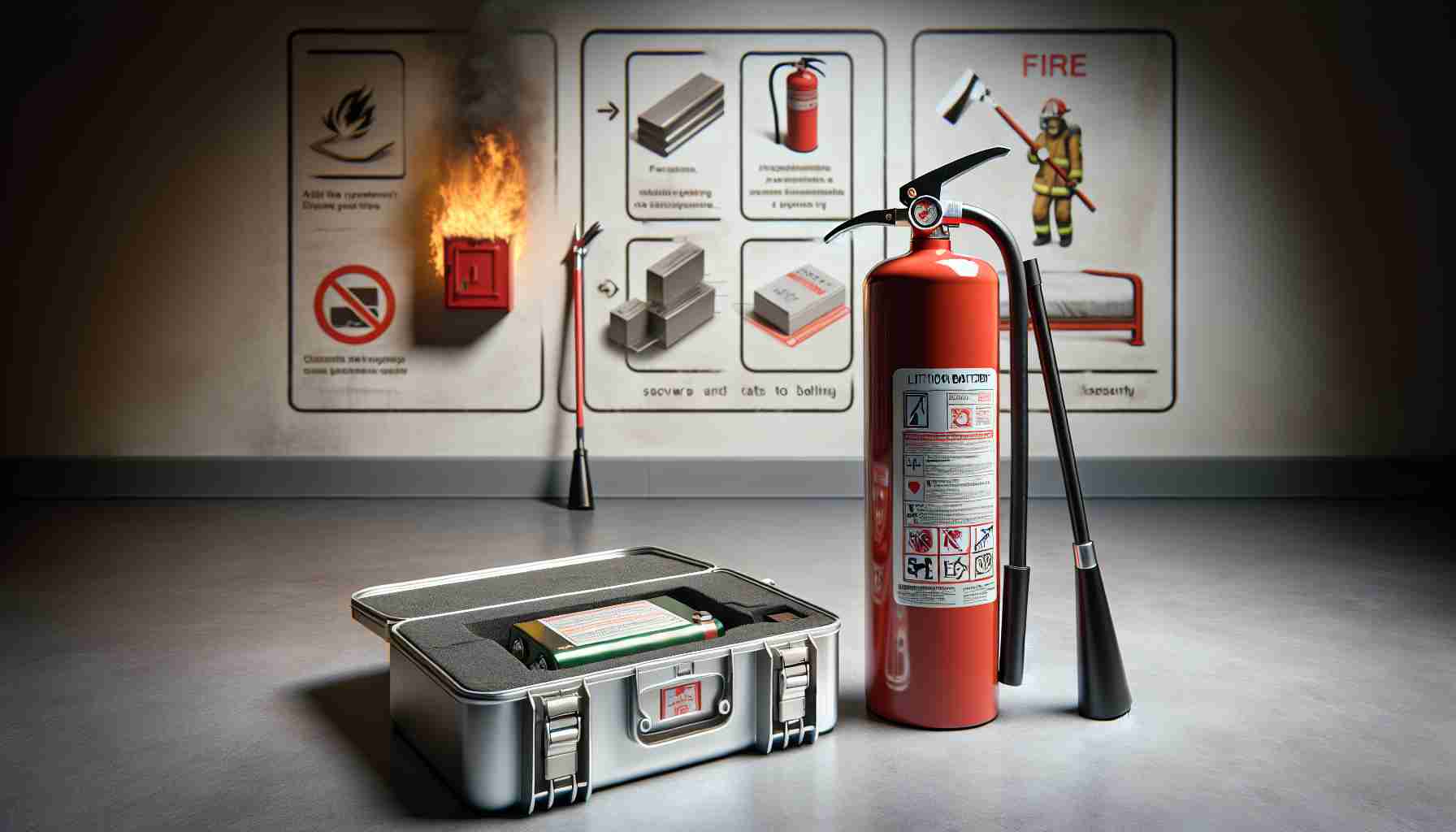Millions of lithium-ion batteries are used or stored worldwide. Lithium-ion batteries are regularly used to power many devices and vehicles that we use in our daily lives.
Unfortunately, incidents involving fires with these batteries are rare but there are significant hazards associated with these cells. The combination of flammable electrolyte and significant energy stored in the battery can lead to a fire or explosion as a result of a single failure.
The main safety hazard associated with lithium-ion batteries is the phenomenon known as ‘thermal runaway’. This occurs when the battery cell generates more heat than it can effectively dissipate, leading to the rapid uncontrolled release of energy in the form of heat. This can cause a fire or explosion, and the causes can be manufacturing defects, mechanical damage, exposure to external heat sources, or overcharging/discharging.
Thermal runaway can lead to the release of various gases from the battery casing, such as hydrogen (extremely flammable), carbon monoxide (toxic, suffocating, and flammable), and hydrogen fluoride (highly toxic and corrosive).
Improper use and storage of lithium-ion batteries can significantly impact the safety of people in a building. Taking into account fire safety regulations in the United Kingdom, the person responsible for the building must identify the general fire risk and the risk of fire spread on the premises.
According to the regulations in the United Kingdom, the building owner must conduct a proper fire risk assessment to identify general fire precautions to be taken. The fire risk assessment should be appropriate, thorough, and consider the storage, handling, use, and charging of lithium-ion batteries.
Safe Practices for Lithium-Ion Battery Safety
The results of the fire risk assessment should include recommendations for safe use, storage, handling, and charging of lithium-ion batteries. Each of these recommendations contributes to the fire risk management strategy and safety measures.
Typical recommendations may include:
– Using only devices provided by reputable manufacturers or suppliers and charging the batteries using the appropriate original charger or a compatible charger designed for safe charging of specific battery cells.
– Regularly inspecting batteries for damage. (Never use damaged or faulty batteries.)
– Providing a dry, cool, well-ventilated space for battery handling and avoiding high humidity.
– Removing flammable or combustible materials, sharp objects, and avoiding battery contact with conducting materials from the battery handling area.
– Effectively managing the battery charging process by trained personnel, ensuring that batteries are removed from chargers after charging is complete and not leaving them charging in unoccupied areas.
– Providing comprehensive training to personnel on emergency procedures and specific instructions regarding damaged or faulty batteries. Employees should be aware of their limitations in case of a lithium-ion battery-related fire.
– Storing unused batteries in appropriate enclosures such as metal battery storage cabinets or fire-resistant protective bags.
– Ensuring and regularly maintaining an adequate smoke detection system that provides sufficient information for the remaining occupants of the building (preferably combining smoke and carbon monoxide detection).
– Limiting the size of storage areas and dedicating them to lithium-ion batteries only.
Key Information on Safe Use of Lithium-Ion Batteries:
FAQ
1. What is the main hazard associated with lithium-ion batteries?
The main hazard is the occurrence of thermal runaway, which results in the rapid release of energy in the form of heat. This can lead to a fire or explosion.
2. What gases can be released during thermal runaway of a battery?
During the thermal runaway of a battery, gases such as hydrogen (flammable), carbon monoxide (toxic and suffocating), and hydrogen fluoride (corrosive and highly toxic) can be released.
3. What are the best practices for lithium-ion battery safety?
Best practices for lithium-ion battery safety include using devices from reputable manufacturers, regularly inspecting batteries for damage, providing adequate space for battery handling, managing the charging process by trained personnel, training employees on emergency procedures, and storing unused batteries in appropriate enclosures.
4. What precautions should be taken when using lithium-ion batteries?
Precautions include avoiding charging batteries with inappropriate chargers, removing flammable or combustible materials near the batteries, ensuring a proper smoke detection system, and limiting the size of battery storage areas.
5. What are the fire safety regulations in the United Kingdom?
According to the regulations in the United Kingdom, building owners must conduct a fire risk assessment and take appropriate precautions to ensure the safe use of lithium-ion batteries.
Key Definitions:
– Lithium-Ion Battery: Battery in which energy is stored through an electrochemical process using lithium as the active substance.
– Thermal Runaway: The situation where the battery cell generates more heat than it can effectively dissipate, leading to a sudden release of energy in the form of heat.
– Electrolyte: Substance that enables the flow of ions between the electrodes in a battery.
Suggested Related Links:
– National Fire Protection Association – nfpa.org
– Health and Safety Executive – hse.gov.uk
The source of the article is from the blog scimag.news
